How to use EquiLab and pot odds to construct a proven profitable 4-bet range vs. loose and aggressive (LAG) poker players.
What does a 3-bet range from a LAG player look like?
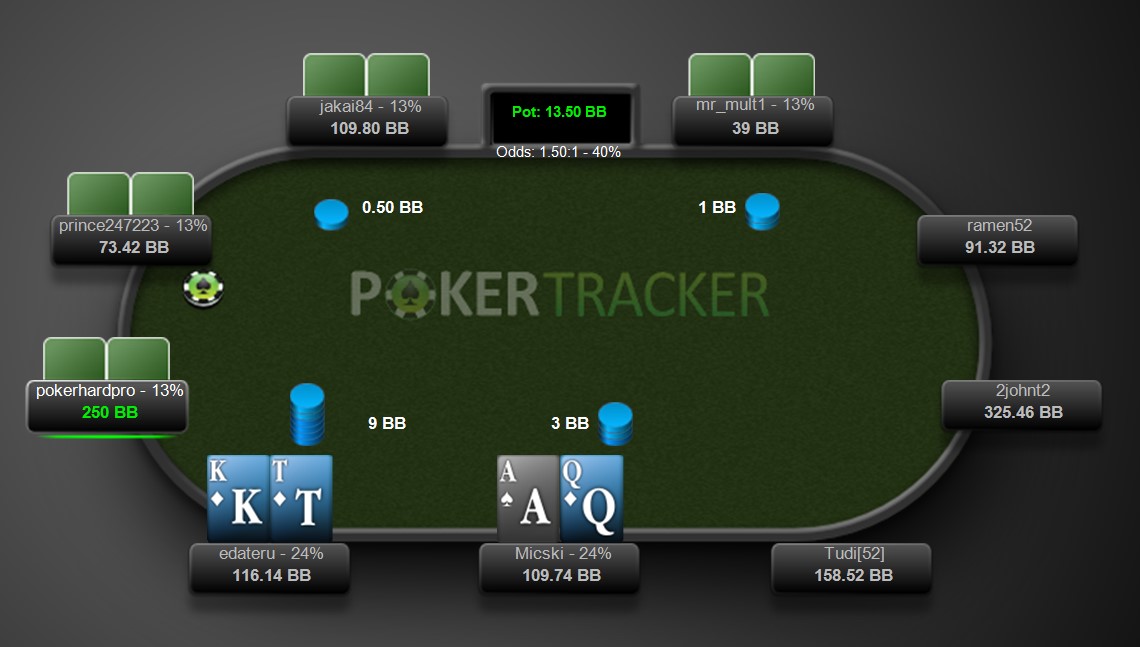
LAG players wants to exploit their position with tricky lines vs. middle positions by ramping up their 3-bets. This also have a benefit of putting pressure on you and ultimately induce tilt. The 3-bet range will contain a lot more royal cards, than most players will use for 3-bets. These cards not only blocks some stronger hands, but also often connects with boards in tricky ways for running multi street bluffs, that will make life hard for you. Especially, if you have a tendency for choosing a passive line with a minimum defend strategy.
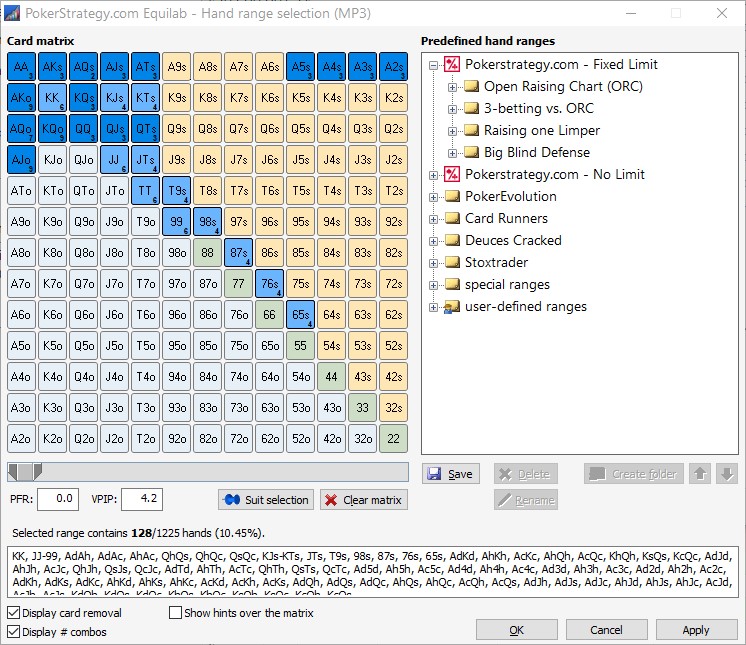
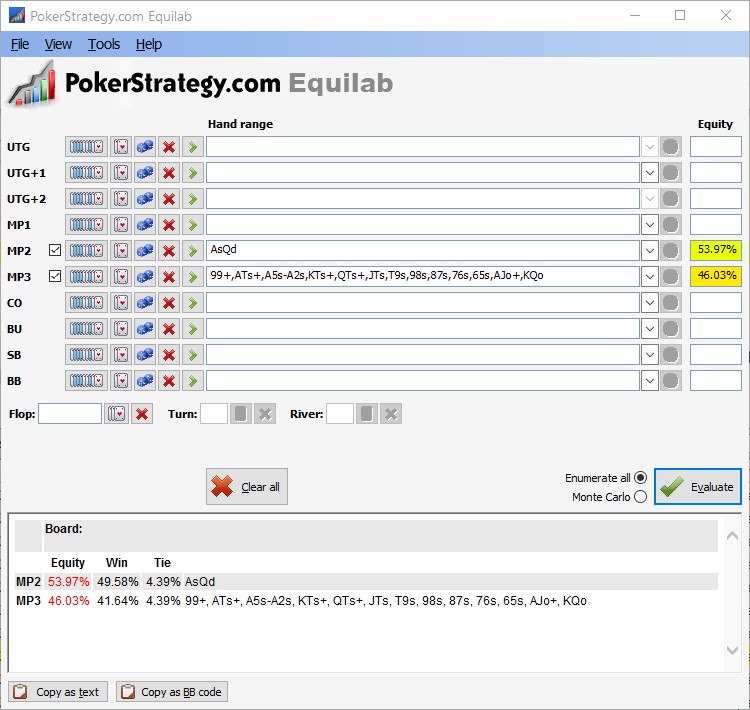
The 3-betting LAG player knows, that his range is slightly behind in this spot, but he assumes a fair amount of folding, passive and faulty play from his opponent. The LAG player will try to exploit his position and make life hard for you.
Do not call 3-bets from LAG players when being out of position.
It is hard to read LAG players and their 3-bet ranges, because of their wide and polarized ranges and tricky play style. If you call their 3-bets, you will have a hard life, while trying to defend your hand. His tricky play style, which include balanced ranges and bet sizes, will be an invitation for him to get maximum value from you and eventually induce tilt in you. If you consider a call, based on a minimum defend strategy, you will be going on forward, not knowing, where you are in the hand. You should have a proven 4-bet or fold strategy vs. these players.
How to construct a 4-bet range from LAG players.
A 4-bet range vs. LAG players have several benefits. The first, and most important, is actually value. In this scenario, a large part of your opening range is ahead of his 3-bet range, that will be balanced between selected value hands and bluff hands of suited aces and suited connectors. You can exploit this by ramping up your 4-bet range. He will often fold or continue with worse hands, based on, whether he assumes, that he has direct odds, implied odds or fold equity for a bluff now or later in the hand. For this reason, the range should be hands, that can flop well, but also block his better hands. We can use the hand range calculator in EquiLab to construct such a range.
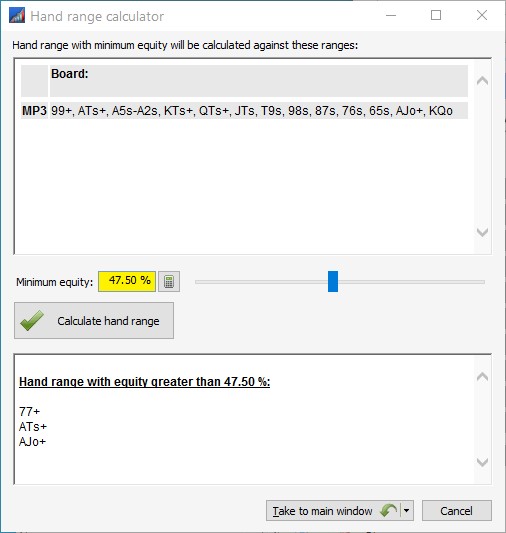
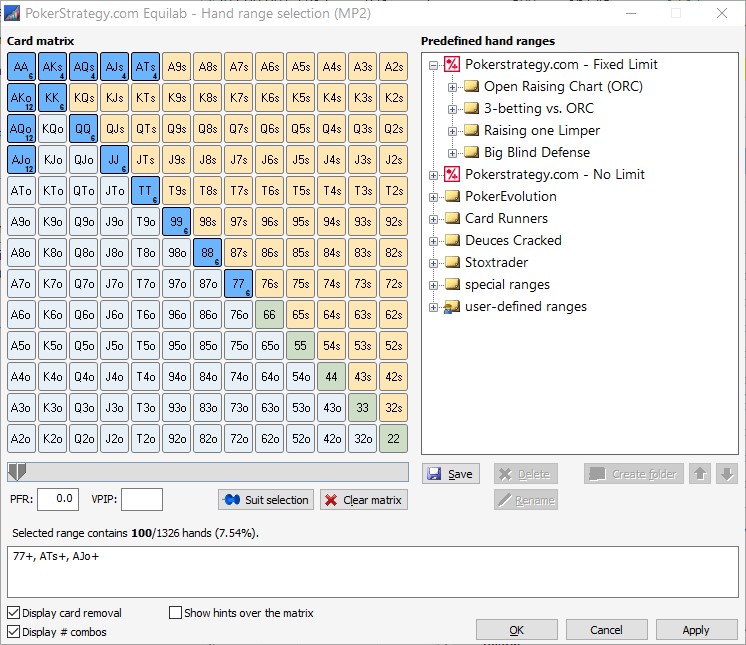
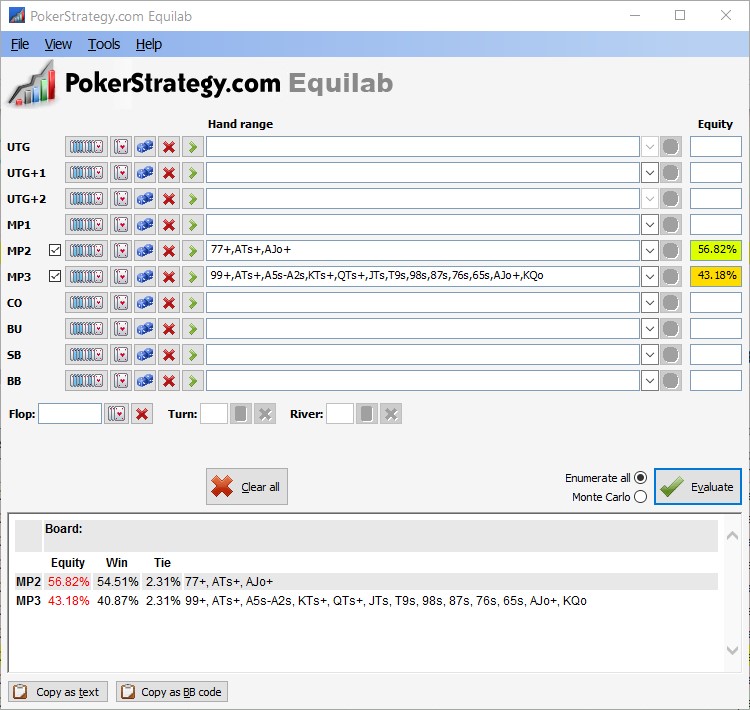
4-bet size vs. LAG players.
A 4-bet size vs. LAG players should be on the large side. If you go for a low size, such as 2x, which is 20 big blinds, then the LAG player will only need 26,51% to make the call. Even if you go for a slightly larger size, such as 2,2x, which is 22 big blinds, he will only need 28,57% to make the call. In both cases, he can profitably continue with a wide range, based on, whether he assumes, that he has direct odds, implied odds or fold equity for a bluff now or later in the hand. This will give you a hard time and nothing have been accomplished by your 4-bet.
Odds% = $Call / ($Call + $Pot) = 11 bb / (11 bb + 0,5 bb + 1 bb + 20 bb + 9 bb) = 26,51%
You should exploit the fact, that you are 4-betting for value, and, that he is willing to give action with worse hands. For this reason, the size should be on the larger side. I recommend, that you make it 3x plus 1 big blind, if you are out of position, which is 28 big blinds. He needs 33,04% to make this call. If you go for 4x, which is 36 big blinds, then he needs 36,73% to make the call. Your sizing will be slight unexpected for the LAG player and he will have to consider, if he will commit his stack now, because he will probably not be able to get you off your hand. LAGs will fold a large part of their range to this size and only continue with hands, that are strong enough to commit his stack. Typically JJ+ and AK.
You could also consider having some hands in your 4bet range, that will go all-in at this point. Such hands could be KK and AK. If you go for a bet size of 100 big blinds, and is all-in, then he needs 45,16% to make the call. There are some players, that see this kind of crazy sizing as tilt induced, which can make them call you off lighter with hands, such as 77+.
Call range vs. 5-bet all-in.
Be aware, that you will sometimes see a 5-bet all-in from the LAG player. This will, unfortunately, also have some bluffs in it. Once again, he is trying to put pressure on you with a tough decision, that could have been avoided. Usually, he does this quick, so you are tricked to think, that he has a strong hand, that needs no consideration. He is however aware of the math and knows, that it will be profitable, if you are not prepared for his tricky strategy and finds a frustrated fold. His 5-bet range might look like the following range.
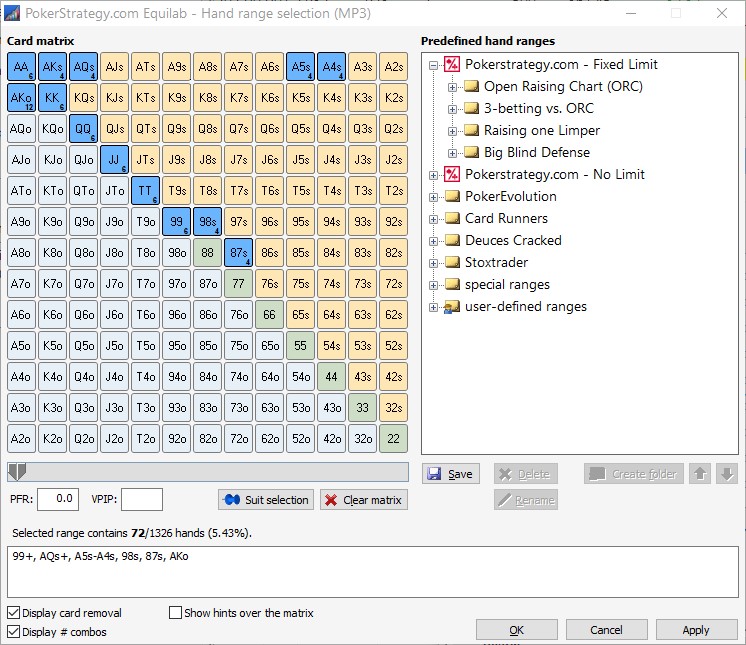
If you 4-bet to 36 big blinds and he 5-bets that range to 100 big blinds all-in, then you must consider, which hands, that can call the 54 big blinds to win the pot of 137,50 big blinds. You need 28,20% to make the call.
Odds% = $Call / ($Call + $Pot) =54 bb / (54 bb + 0,5 bb + 1 bb + 36 bb + 100 bb) = 28,20%
Once again we can use EquiLab to calculate a range, that can make this call. The result is, that our original 4-bet range can make the call profitably. The reason is actually, that we used a value range to begin with and now, that the odds has improved, those hands can make the call.

The expected value of the call is 37,73 bb each time.
EV = (Win% x $Pot) – (Lose% x $Call) = (47,90% x 137,50 bb) – (52,10% x 54 bb) = 37,73 bb
Calculating the expected value of a 4-bet all-in.
The LAG player in this scenario has 160 hands in his 3-betting range. If we go for the 4-bet, with an all-in bet size of 100 big blinds, then he will fold a quite large portion and only call with his strong hands. If we assume, that he calls with JJ+/AK, which is often the case, then he will fold 75%, which will reduce his range to 40 hands. We have 37,63% equity vs. that calling range.
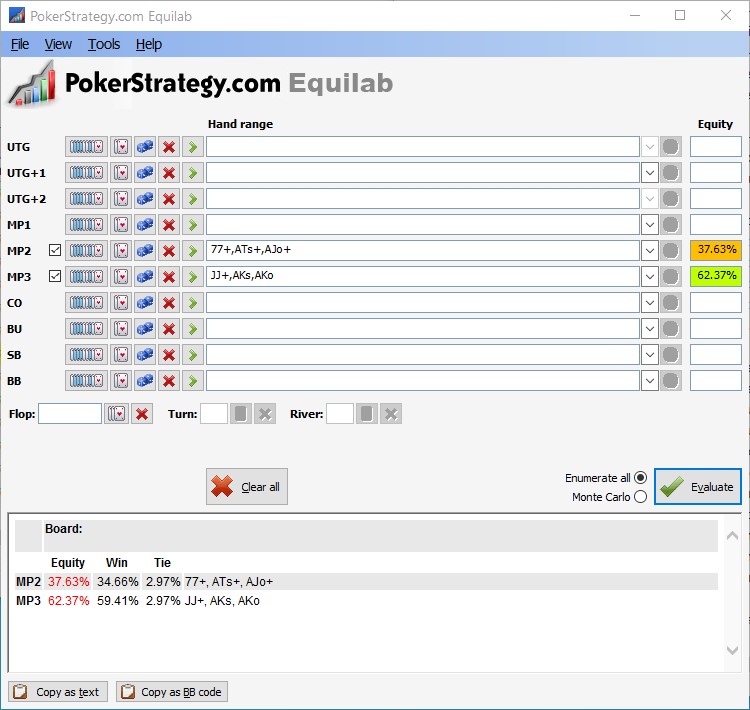
The expected value for our 4-bet is 5,77 big blinds each time or until, if ever, the LAG player changes his strategy. This might not seem much, but it is not only profitable, it also avoids big losses in tricky hands and it has the benefit of returning the pressure. You should, however, consider leaving the table, if a more profitable one runs. Especially, if stacks are deeper.
EV = (Fold% x $Pot) + (Call% x Win% x $Win) – (Call% x Lose% x $Lose) = (75% x 13,50 bb) + (25% x 37,63% x 104,50 bb) – (25% x 62,37% x 91 bb) = 5,77 bb
More about poker strategy.
Hand ranges for semi loose and aggressive (SLAG) poker players and How to review poker hands in PokerTracker by myself. Advanced Poker EV Formula by SplitSuit.
